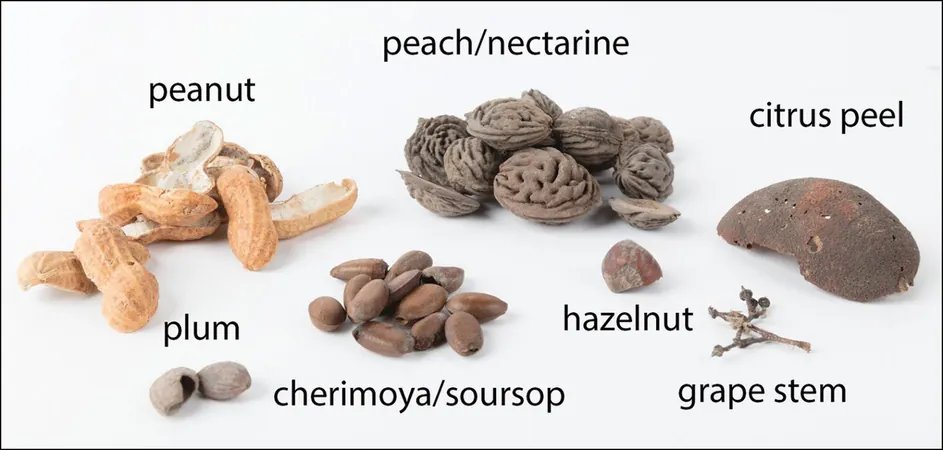
Shocking Discovery: Dried Plants from 19th-Century Australian Institutions Reveal Secret Snacks and Acts of Rebellion!
2025-01-21
Author: Daniel
A Groundbreaking Discovery
A groundbreaking analysis of dried plant remains from a 19th-century colonial institution in Australia has unveiled a trove of food items not documented in official records. These findings suggest that inmates engaged in covert snacking as a form of resistance against the drudgery of institutional life, with implications that challenge our understanding of dietary practices in such settings.
Research Details
Published in the esteemed journal Antiquity, this research conducted by Dr. Kimberley Connor from Stanford University shines a light on the often-overlooked experiences of those living within the confines of colonial institutions like schools and workhouses, which served as both regulatory and punitive mechanisms of the British Empire.
Role of Food in Institutions
Food played a crucial role in these institutions, structuring daily existence and creating hierarchies among inmates. However, historical knowledge regarding diets has primarily relied on official records, which often failed to reflect the true range of foods consumed. "While historical sources paint a picture of dull, standardized diets aimed at inculcating idealized British dietary habits among immigrants, there is little evidence to ascertain if these sources accurately describe the actual food intake," Dr. Connor states.
Analysis of Plant Remains
To delve deeper, Dr. Connor analyzed desiccated plant remnants discovered beneath the floors of The Hyde Park Barracks in Sydney. Originally a convict barracks, it later transitioned to a residence for unmarried women, and eventually served as an asylum for vulnerable women. The analysis uncovered an assortment of fruits, vegetables, nuts, and spices, ranging from native Australian species like macadamia nuts and quandongs to foreign imports such as American corn cobs and Southeast Asian lychees.
Covert Snacking as Resistance
The surprising aspect? Most of these foods were not listed in any official documentation, hinting that the women may have acquired them informally during church visits or through their limited leaves of absence. More intriguingly, some of these larger food items were unlikely to have merely fallen under the floorboards by accident. This discovery suggests that inmates likely concealed their snacks intentionally, possibly to evade the scrutiny of the institution’s authorities.
Psychological Implications
Such clandestine food-sharing rituals could represent small but significant acts of defiance against the strict discipline imposed by the colonial regime. Dr. Connor articulates the psychological implications: "Sharing a handful of peanuts or sneaking in an orange provided women a vital connection to their individual identities and relationships in an environment that sought to erase those very differences."
Significance of the Research
This research not only reinforces the critical role of archaeology in uncovering hidden histories but also emphasizes the potential stories that lie buried beneath our feet. "The exceptional preservation of plant remains at The Hyde Park Barracks provides remarkable insights into a complex system of food gathering and consumption that is largely absent from historical texts," concludes Dr. Connor, urging us to rethink the narratives surrounding life in 19th-century institutions.
Looking Ahead
As more archaeological work sheds light on such hidden aspects of colonial life, what other secrets might we uncover from the past? The possibility is tantalizing, suggesting that even in the darkest corners of history, human spirit and ingenuity persist.





 Brasil (PT)
Brasil (PT)
 Canada (EN)
Canada (EN)
 Chile (ES)
Chile (ES)
 Česko (CS)
Česko (CS)
 대한민국 (KO)
대한민국 (KO)
 España (ES)
España (ES)
 France (FR)
France (FR)
 Hong Kong (EN)
Hong Kong (EN)
 Italia (IT)
Italia (IT)
 日本 (JA)
日本 (JA)
 Magyarország (HU)
Magyarország (HU)
 Norge (NO)
Norge (NO)
 Polska (PL)
Polska (PL)
 Schweiz (DE)
Schweiz (DE)
 Singapore (EN)
Singapore (EN)
 Sverige (SV)
Sverige (SV)
 Suomi (FI)
Suomi (FI)
 Türkiye (TR)
Türkiye (TR)
 الإمارات العربية المتحدة (AR)
الإمارات العربية المتحدة (AR)